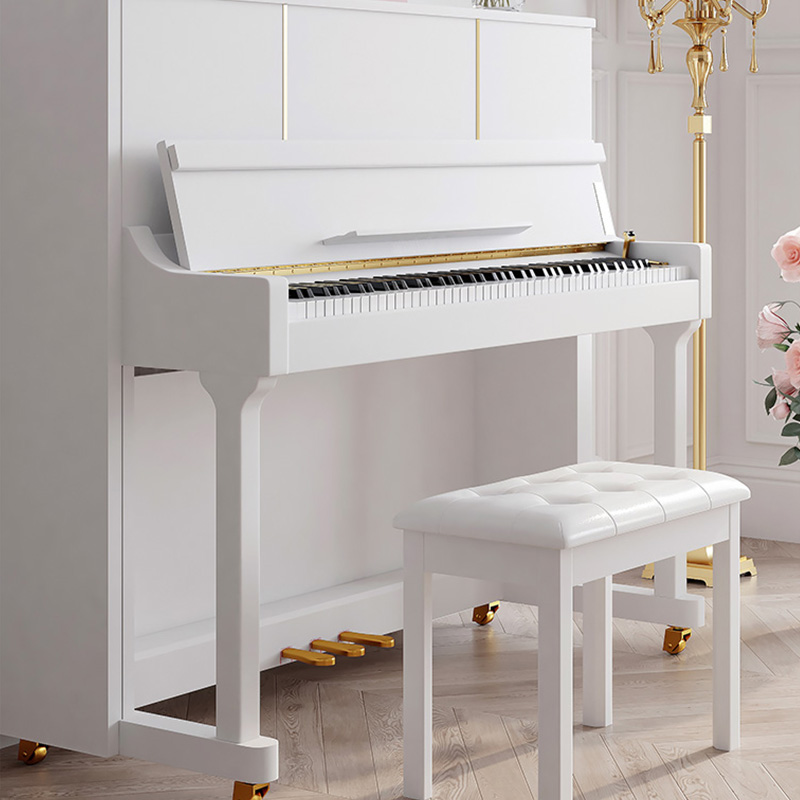Key Features and Components
Sound Quality and Sampling
One of the standout features of digital pianos is their sound quality. Advanced models use high-quality sampling technology to replicate the rich, nuanced tones of acoustic pianos. This sampling process captures every subtle detail of acoustic piano sounds, ensuring a realistic and authentic playing experience.
Key Action and Touch Sensitivity
Digital pianos simulate the key action and touch sensitivity of acoustic pianos through weighted keys. This feature allows pianists to control the dynamics and expression of their playing, just like they would on a traditional piano. Manufacturers often categorize key actions into different types such as graded hammer action or fully weighted keys, each providing a unique feel to accommodate various playing styles.
Polyphony and Voice Options
Polyphony, another crucial aspect, determines how many notes a digital piano can produce simultaneously. Higher polyphony counts enable smoother transitions and prevent notes from dropping out during complex pieces. Additionally, digital pianos offer a variety of voices or instrument sounds beyond the standard piano tones. Users can explore different instruments such as strings, organs, or even synthesized effects, enhancing creativity and versatility.
Functionalities and Connectivity
Built-in Features
Modern digital pianos come equipped with a range of built-in features designed to enhance the playing experience. These may include metronomes for timing practice, recording capabilities to capture performances, and educational tools such as lesson modes or integrated apps for learning.
Connectivity Options
Connectivity is another area where digital pianos excel. They often feature USB ports for connecting to computers or external devices, enabling seamless integration with music software or MIDI controllers. Some models even support Bluetooth connectivity, allowing wireless communication with smartphones, tablets, or Bluetooth-enabled speakers.
Advantages Over Acoustic Pianos
Portability and Maintenance
Unlike acoustic pianos, which are heavy and require regular tuning, digital pianos are portable and maintenance-free. They can be easily moved from one location to another without the need for professional movers or tuning technicians. This makes them ideal for gigging musicians, small apartments, or educational settings.
Versatility and Customization
Digital pianos offer unparalleled versatility and customization options. Players can adjust various parameters such as reverb, touch sensitivity, or even customize their sound profiles through downloadable presets. This flexibility allows musicians to tailor the instrument to their preferences and musical genres.
Choosing the Right Digital Piano
Considerations
When selecting a digital piano, several factors should be considered:
- Purpose: Determine whether it’s for home use, stage performance, recording, or educational purposes.
- Budget: Set a realistic budget based on desired features and functionalities.
- Key Action: Test different key actions to find the one that feels most comfortable and responsive.
- Sound Quality: Listen carefully to the piano’s sound quality, especially the realism of piano samples and additional instrument voices.
- Additional Features: Evaluate additional features such as connectivity options, built-in learning tools, or compatibility with external devices.
Popular Models and Brands
Explore reputable brands known for their quality and innovation in digital pianos. Brands like Yamaha, Roland, Kawai, and Casio offer a range of models catering to various skill levels and musical preferences. Researching reviews and user feedback can provide valuable insights into each model’s performance and reliability.
Our company is a comprehensive enterprise ingratiating research and development, design, production, sales and service. We produce several kinds of electronic piano for all over the world.If you want to know more details, add mywhatsapp: +8617706062278. Gmail: anngood88day@gmail.com





